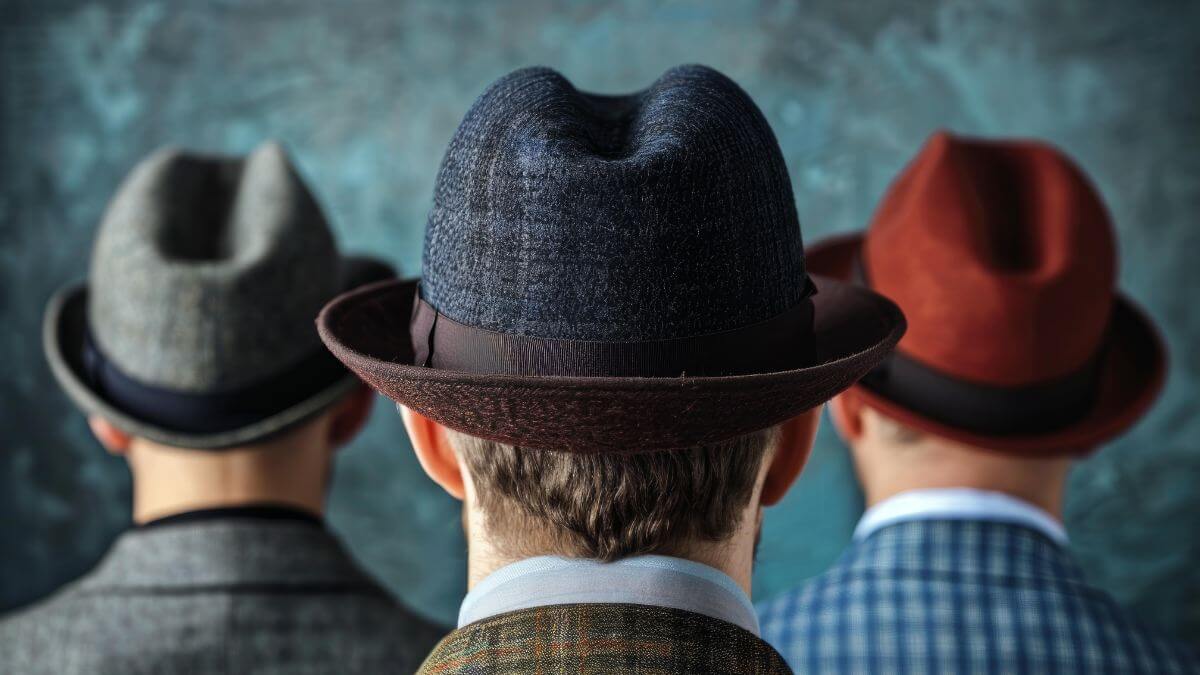


Home » The Truth About… Judges Who Show Their Dogs

The topic of judges who show their dogs has been hitting social media pretty regularly. Well, I think there are some myths about this and I want to dive in because I’m a judge-exhibitor and, as I continue my education on more breeds, I continue to participate in showing my own dogs.
To be completely honest, when there are complaints about judges showing, they’re generally focused on a small group of people. When exhibitors talk about being disadvantaged, they’re focusing on the high-profile judges; people who have visibility because they judge more often than they could show. However, the fact of the matter is that most exhibitors don’t know who or how many judges are actually competing at a dog show on any given day. They are only aware of the more prominent players who do both and, oftentimes, do both well. In breeds like German Shepherds and Labradors, there are lots of breeder-judges, and yet, most are not well-known to every judge they show to, nor to those competitors in the ring with them.
All AKC exhibitors are on the same pathway. We are all exhibitors first. Then we are breeders, then many become judges. That’s the trajectory to judging. This is the system put in place by the American Kennel Club. The complaint of an unfair advantage is really just a disgruntled opinion. It defies logic to negatively brand those who are balancing all levels of the sport. It’s unfair to think a judge is too well-known to exhibit. Those judges are died-in-the-wool breeders, devoted to the animals they bring to a judge. They own the dog they’re showing. They have invested in it. They have already made a judgment on the quality of the animal and made the decision to show it. And while I am aware that there is a perceived advantage, it is really a double-edged sword. It is a burden to bring into the ring the fact that you are a multi-Group judge. That is your baggage as a successful judge who continues to exhibit. (STRIKE ONE!) From the judge’s perspective, you have to perform at 125-150 percent so that it doesn’t look like you’re winning because of who you might be. There is an additional layer of difficulty for the judge-exhibitor.
Some exhibitors try to justify losses by pointing out the relationship and camaraderie that may or may not exist between the judge and an exhibitor who is also a judge. But what they underestimate is the product. For those who breed, show, and judge, the investment is made only in what is believed to be the cream of the crop. At that level, the scrutiny of one’s exhibit is under the microscope and must be of superior quality so as to not reflect poorly on your position in the sport overall. As I have said in previous articles, our dogs reflect our knowledge of the breed.
Mind you that for all the perceived advantages, there are more challenges for the judge showing his/her own exhibit. The other side of the coin is personal loss, oftentimes having nothing to do with the dogs’ conformation. When an exhibitor-judge’s dog loses, the loss is more often based as a penalty on the relationship with the judge rather than a reward for having one. “I didn’t want to put you up because we’re friendly.” It’s that whole situation of being too familiar. (STRIKE TWO!!)
There has to be decorum, a separation. We walk a fine line of familiarity and it requires a professional distance. I often think of my own situation as having to wear many different hats. Today I am an exhibitor, and I have to act accordingly. Next weekend I can judge, in the same area, with the same people and exhibits, and I have to act accordingly.
There are some judges who say, incorrectly, “I won’t put up judges who show.” Well, this is contrary to what we do, and it sort of goes to the mindset of your integrity and your inability to be wavered by outside influence. I hear a lot of conflict-of-interest discussions about judges who show and yet I don’t know that people understand how or where there might be a conflict. There is no conflict of interest if it’s an honest adjudication, in my opinion. My focus is as a breeder. That’s my creative outlet. That’s where I participate in the art form. All judges should simply judge the charge in front of them, without worry of who is on the other end of the lead.
I want to be sure to point out that this is an AMERICAN phenomenon. Most people don’t know that everywhere else in the world, you can judge on Friday, and on the weekend, you can exhibit to the same panel on Saturday. The onus is placed on the judge to be impartial as a true evaluator of breeding stock. It doesn’t have anything to do with the person showing the dog.
When you complain about judging, you assume you know the operations of the brain of the person making the decisions. (YOU DON’T.) We project our opinion as losing exhibitors on the judge and assume the worst.
Exhibitors can’t control a judge’s decision. If the judge is so easily persuaded by the success of a judge-exhibitor, then they’re going to compromise or falter in their own opinion. This is not to discount that there might be an advantage, but there doesn’t need to be—if the quality of another dog is better… the quality is better. But most of us who participate in the sport as an exhibitor, breeder, and judge walk into the ring with a dog that we believe to be more than good enough. Those select few have invested a long time in the sport, and have crafted the sport and fine-tuned their charges to be exceptional. The bar is higher for them.
I’m of the mindset that the more talented judges are still entrenched in the day-to-day operation of dogs; they are still involved in their original breed or their breed of choice, with deep roots in the breed, and they don’t just give their breeding program away to further their judging career. Their path in dogs is lined with quality animals, not with making decisions on someone else’s quality. A very intelligent breeder-judge once said to me: “If you’re willing to give away your breeding program to judge somebody else’s, it must not have been worth very much to begin with.” Our legacy is created by what we do as a breeder.
I think there is so much value in showing to someone who is still walking the walk, participating in the sport, and understanding the highs and lows and what it takes to “get there.” Judges who show their dogs offer the unique perspective of an entrenched breeder—not a career judge. They are generally more interested in breed type, the balance of type and soundness, and not necessarily the performance. Unfortunately, the handful of high-profile judges who are showing and still breeding has diminished and diminished and diminished, and it is really part of what’s wrong with the sport today. Many long-term breeders gave up so that they could start their “judging careers.” I’m not so sure judging should be a career. After all, look at what happens when you pull all of the breeders out and leave it to inexperienced breeders to fill a population because the talented breeders gave up to judge. It just doesn’t make sense.
There are a lot of judges who were handlers and not breeders. These judges expect a level of condition and performance, and they’re more apt to put up a dog that is clean coming and going, strong on the go-around, level back with a heart for showing; the things that are flashy and appealing and would have appealed to them for a dog in their truck. They bring a different perspective. They have different priorities. By contrast, the judges who still breed are looking for dogs that are appealing for their whelping box. I think both judges are valuable. I think we have judges who were handlers that are exceptional judges, but they don’t breed and they no longer show. I wish many would get back involved. My message in all of my writings is to keep people active in the sport.
When a breeder gets a judge’s license, it does change you as an exhibitor. You have to raise the bar on what you will exhibit. You don’t show a filler and you don’t show something with an obvious fault. You don’t show one that is flawed because you have your own reputation to guard. It’s very important that what you take into the ring represents your kennel and the stature you have as a breeder, exhibitor, and judge. Prior to entries being made, you have already culled through the mediocrity to hopefully show the exceptional, and they are reflective of your vision accordingly.
Most judges start judging when they are more mature, and so the vast majority do leave their kennels behind. They age-out of the daily dog responsibilities, where they don’t want to have another litter or two and maintain the kennel as they age. This trajectory is very common. Additionally, the American Kennel Club system does not really seek out the younger judge because of all the perceived conflicts that go along with it. When I started judging at 37, I had many conversations with the office: “Surely you’re going to stop breeding so that you can become a judge.” I never subscribed to that way of thinking—and I still don’t. We’ve all seen talented judges in the ring who are long-term breeders, not regular AKC judges, who are approved for one time to do their breed’s national specialty. Without the negative onus of being a “breeder,” I wonder if they might have pursued judging at a much younger age, and we would have had the benefit of their talent were it not for the fact that the general public sees it as a conflict of interest, which surely, it is not.
For judges who show, it’s not solely a privilege. Judge-exhibitors are faced with a number of challenges they wouldn’t face if they weren’t a judge. Their presentation has to be top-quality. The bar is set higher. I would like to see more exhibitors happy to see someone remaining engaged in the sport. It is important to be engaged on that level, and breeder-judge-exhibitors are still doing it. That’s why we show to breeder-judges. We show to breeder-judges because they should be the most knowledgeable about that breed.
I will finish up with this final thought. The importance of every exhibitor and each exhibit is valued within the sport of purebred dogs. The integrity of the adjudicator is the most important aspect of the dog show. Their knowledge and history, their ability to be free of outside influences and select based on their individual interpretation of a breed’s Standard is paramount. This is why we enter our dogs under them. It does not matter who is handling. Quality matters and quality must always be rewarded.
As a judge who continues to show, I know all too well the double-edged sword that comes with it. Integrity can’t be taught. You either have it or you don’t. Be mindful that each and every one of us has the right to exhibit regardless of title. Everyone has an equal opportunity for success at each show. What is not equal is the merit of the exhibits. This is where the selection process comes into play, and where the best dogs prevail. Let’s have more faith in our sport and in each other. No straight arrow follows a crooked path.
